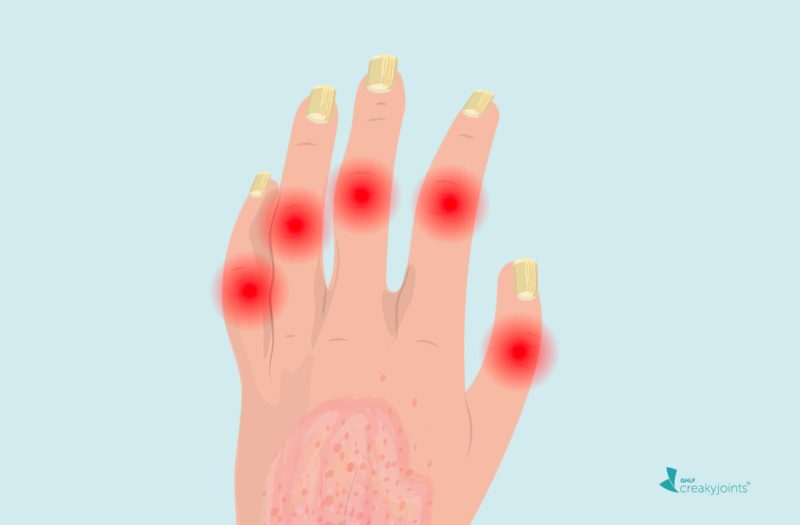About 30 percent of people with psoriasis end up developing psoriatic arthritis (PsA), a disease that often combines scaly skin plaques (psoriasis) with stiff, painful joints and swollen fingers and toes. Nail changes — including crumbling, pitting, and separation from the nailbed — are also fairly common in both conditions.
Now a study found that psoriasis patients who have nail involvement may be more apt to develop PsA in the future.
Psoriasis, which is best known for causing scaly skin plaques, can become visible anywhere on the body, including the hands, feet, face, and back. About 40 to 50 percent of the time it also impacts the nails.
In the new study, published in the Journal of Rheumatology, researchers conducted a literature review of 66 earlier studies on nail psoriasis to learn about its connection to PsA. They determined that “patients with psoriasis are three times more likely to develop PsA if they have nail symptoms.”
The researchers explained that an underlying network of tendons connects the nails with the distal interphalangeal (DIP) joint, which is located on the top knuckle of each finger (the one closest to the fingernails). “This may explain why patients with PsA, who usually present with enthesitis of the DIP joint, also frequently (although not always) present with nail changes characteristic of [nail psoriasis],” they wrote.
Enthesitis is inflammation of connective tissues like ligaments and tendons. It is common in psoriatic arthritis.
Identifying the connection between nail psoriasis and the joints presents a potential opportunity for PsA to be detected and treated earlier. People with nail psoriasis do not routinely take systemic, disease-modifying drugs that could prevent or slow PsA. More research on the topic is warranted, but this study suggests that those with nail psoriasis might benefit from such therapies, or that they should at least be monitored for joint symptoms more closely than other psoriasis patients.
The authors noted that the development of “a simple, validated, and widely accepted [nail psoriasis] scoring system and well-defined treatment guidelines for patients with [nail psoriasis]” would go a long way toward identifying psoriasis patients who are most apt to develop PsA so they can be treated more appropriately.
Track Your Symptoms with ArthritisPower
Join CreakyJoints’ patient-centered research registry and track symptoms like fatigue and pain. Learn more and sign up here.
Kaeley GS, et al. Nail Psoriasis: Diagnosis, Assessment, Treatment Options, and Unmet Clinical Need. Journal of Rheumatology. February 2021. doi: https://doi.org/10.3899/jrheum.201471.






